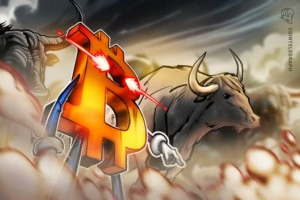In today’s rapidly evolving digital landscape, AI-generated avatars are set to transform our online presence, acting as virtual influencers, workplace representatives, and embodiments of our digital selves. However, a critical question arises: who truly owns and controls these digital identities? The increasing integration of AI avatars into various facets of our lives must be safeguarded against exploitation, financial fraud, and the potential loss of autonomy.
The traditional model relies heavily on centralized platforms, where corporations dictate the terms of engagement and hold significant power over user data. This dynamic is fraught with risks, including high-profile incidents such as the January 2024 deepfake robocall misleading voters during the U.S. elections. Such fraudulent activities expose the vulnerabilities of centralized systems, emphasizing the urgent need for a more secure and empowering framework.
One of the starkest warnings from this model is illustrated by incidents within the entertainment industry. The circulation of deepfake images of celebrities, including explicit content that reached millions before removal, highlights the shortcomings in content moderation. When users’ digital likenesses are mishandled, they suffer the repercussions, and this systemic failure draws attention to the flaws inherent in centralized avatar management.
Decentralizing AI avatars through blockchain technology provides a transformative solution. By enabling users to independently manage their digital identities, we can foster an ecosystem where self-sovereign identity becomes a reality. Blockchain offers an essential safeguard through its on-chain verification capabilities, creating an immutable record of avatar ownership, thus significantly countering unauthorized uses and reducing the risk of AI-driven fraud.
By deploying smart contracts, we can automate rights management, ensuring that digital avatars operate with the utmost security and transparency. This innovation not only fortifies protections against theft but also eases the ethical and legal burdens associated with centralized control, granting users verifiable dominion over their online personas.
Moreover, the integration of decentralized AI avatars into web3 ecosystems can spur the development of a thriving digital economy. This economic model revolves around user ownership and encompasses metaverses, digital workplaces, and social networks. Consider a musician using a blockchain-verified avatar to sell their digital presence or a remote worker utilizing a unique digital twin for meetings—these scenarios represent the future of virtual interaction.
The involvement of decentralized systems in managing AI avatars is paramount to ensuring safety and fostering innovation. As we navigate an AI-rich environment, blockchain technology emerges as a beacon of hope, empowering individuals while safeguarding their digital identities. It’s time we leverage this technology to reclaim ownership over our virtual selves and decisively step towards a more equitable digital future.
In conclusion, without immediate changes to decentralize AI avatar management, we risk falling further into a landscape dominated by corporate interests. The clock is ticking on our ability to protect digital identity—embracing blockchain is not just an option; it is a necessity.



